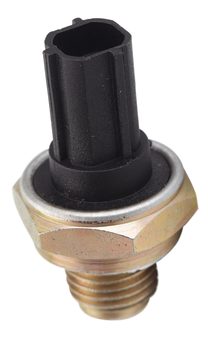You are driving relaxed on the motorway and then it happens: the car suddenly reduces to a lower speed but continues to drive as normally. This phenomenon is known as “loss of performance”, which unfortunately has many causes. Read in this article what you can do in such a case.
The price of comfort and environmental protection

A car needs three things to drive: air, fuel and ignition spark. If one of these factors is not sufficiently provided, it has a direct effect on the performance of the vehicle.
In older vehicles, the cause for loss of performance can be therefore identified quickly:
| Fresh air supply to the engine: Check the air filter, check the intake hose for leaks (so-called false air or secondary air). |
| Fuel: Check fuel pump and fuel filter. |
| Ignition spark: check ignition coil, ignition distributor, ignition cable and spark plugs. |

With this handful of measures, cars built up to about 1985 were sufficiently equipped to detect loss of performance. Due to the many assistance systems and modules for exhaust gas purification, troubleshooting a loss of performance is much more difficult today.
The first step therefore is finding the cause of a loss of performance through reading out the error memory.
Defective sensors are frequent culprits

Sensors are used to communicate a certain value to the control unit. The control unit then adjusts the supply of fresh air or fuel so that the car always runs optimally.
However, if one of the sensors is defective, it will provide no value or incorrect values, which the control unit will then misunderstand. However, the control units are quite capable of recognising implausible values. A faulty value is therefore noted in the memory, where it can be read out. This way, the defective sensor can be quickly detected with the appropriate reader.
A sensor consists of a measuring head and a signal line. The measuring head consists of a resistor that changes its values depending on the environmental conditions. A defective measuring head or a disturbed signal line will therefore cause the sensor to fail. Common sensors are:
 Air flow meter: Measures the air mass drawn in. Air flow meter: Measures the air mass drawn in.
|
|
 Boost pressure sensor: Measures the boost pressure generated by the turbocharger, G-charger or compressor. Boost pressure sensor: Measures the boost pressure generated by the turbocharger, G-charger or compressor. |
|
 Intake temperature sensor: Measures the temperature of the intake air. Intake temperature sensor: Measures the temperature of the intake air. |
|
 Engine temperature sensor: Hangs mostly in the cooling water circuit and thus measures the engine temperature indirectly. Engine temperature sensor: Hangs mostly in the cooling water circuit and thus measures the engine temperature indirectly. |
|
 Crankshaft sensor: Measures the angle of rotation of the crankshaft. Crankshaft sensor: Measures the angle of rotation of the crankshaft. |
|
 Camshaft sensor: Measures the angle of rotation of the camshaft. Camshaft sensor: Measures the angle of rotation of the camshaft. |
|
 Lambda sensor: Measures the residual oxygen in the exhaust gas. Lambda sensor: Measures the residual oxygen in the exhaust gas.
|
|
 Level sensor in the particulate filter: Measures the load condition of the exhaust gas cleaning system. Level sensor in the particulate filter: Measures the load condition of the exhaust gas cleaning system. |
Sensors are usually designed as wear parts. Their replacement is relatively simple. The number of attachments that have to be removed for their replacement is relatively small. Their purchase price is also still very reasonable compared to other components. After replacing the sensor, the error memory in the control unit should be reset. Then the loss of performance should be eliminated for the time being.
Age is not the only cause

Sensors are wearing parts with quite a limited service life. So, it is advisable to examine the failure of a sensor closely. A sensor that is obviously burnt through has nothing to do with wear due to ageing. In this case, there is another, deeper defect that must be repaired.
Of course, it is also possible that the values given by the sensor are correct, but the component group on which the values are measured is defective. Some time later, when the loss of performance does not show itself through the replaced sensor and the same error message is displayed again, you should “go deeper“.

Many causes for loss of performance are still quite simple: clogged air filters, defective spark plugs or ignition cables, porous intake hoses may of course lead to the known problems even in modern vehicles. However, the sensors identify them rather reliable nowadays.
Engine emergency as a warning signal
To a certain extent, the modern vehicle control system can prevent the car from practically destroying itself. For this, the control unit switches the engine to the so-called “emergency programme“.

This results in considerably reduced performance and a notification on the dashboard. This emergency programme is activated, for example, when the engine begins to overheat. The function of the emergency programme is to be able to bring the vehicle to the next workshop as safely as possible. You should therefore never ignore it or accept that the car slows down a little. If you wait too long, you run the risk of fatal engine damage despite the emergency programme. This can happen quite easily with thermal problems.
EGR valve as a performance limitation

One of the components of an exhaust gas purification system for diesel vehicles is the EGR valve. It feeds exhaust gases that have already been burnt back into the combustion chamber, thus lowering the operating temperature. As a result, less nitrogen oxides are produced.
However, the EGR valve is quite susceptible to “sooting“. This means that soot particles are accumulating. This limits the valve’s actuating function and narrows the channel. An EGR valve must be therefore cleaned regularly. If the EGR valve is defective, this is also communicated to the control unit. If the defect progresses, the control unit can then trigger emergency engine programme again, resulting in loss of performance.
Gradual loss of performance with advancing age
Engines are dynamic components with a lot of moving parts. Their performance is largely determined by compression, i.e. the extent to which the air-fuel mixture can be pressed together.

Two components are crucial here: the valves and the piston rings. A leaking valve causes practically the entire cylinder to fail immediately. However, this defect can be noticed quite quickly.
A defective piston ring, however, can remain unnoticed for some time. The loss of performance here will be rather insidious and gradual. Only when the piston ring allows lubricating oil to enter the combustion chamber will it be detected by a blue colour of the exhaust gas. By then, however, the engine has already lost quite a bit of power. This repair is one of the most complex that you can have on a car.
Turbocharger as a weak point

Turbochargers are used to compress the intake air and increase the intake pressure.
Their working principle is basically very simple: two airscrews are connected to a shaft in a housing. One screw is driven by the exhaust gas flow. This causes the second screw to rotate as well. Its task is to compress the intake air. A failing turbocharger no longer compresses air, the engine loses power and the car drives slower. Turbochargers are quite easy to replace, but they are very expensive as a component.
Stay alert

Loss of performance in a car can have a small, inexpensive and trivial cause. Often enough, however, it is a harbinger of more serious engine damage. That’s why you should never ignore this symptom, but immediately start researching the cause and repairing the damage. This way, with a little luck, you can prevent a major defect.
Foto: PK Studio, Matis75, Lily Studio, Zapp2Photo, rocharibeiro, Stason4ik, kurhan, CAT SCAPE, Pavel Shlykov, Alraun, Iaroslav Neliubov, Comedstock / shutterstock.com





 (32 votes, average: 4.63 out of 5)
(32 votes, average: 4.63 out of 5)







